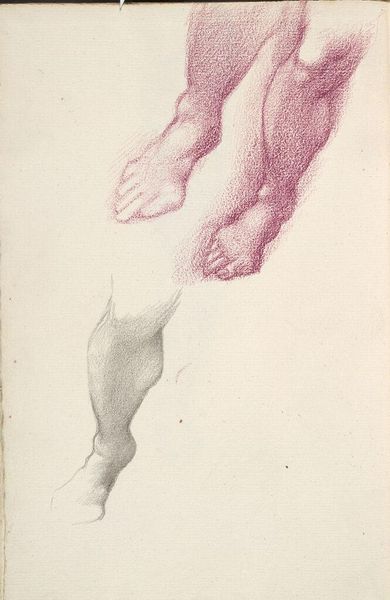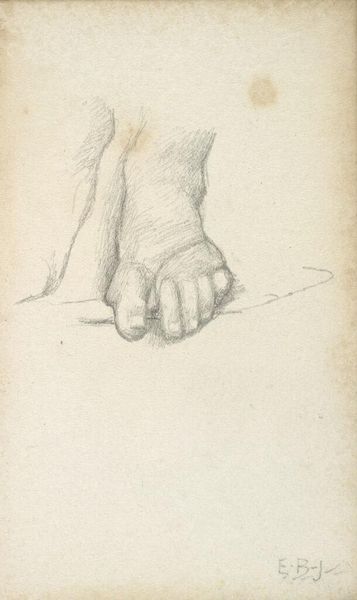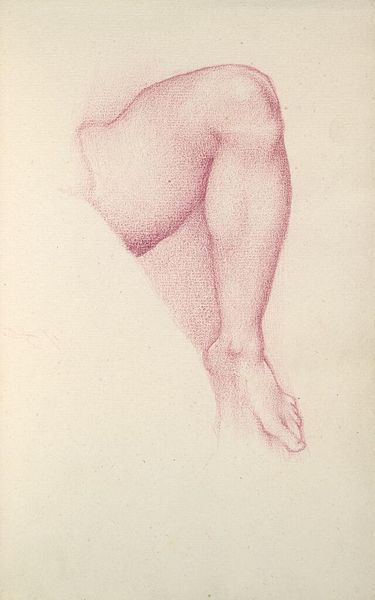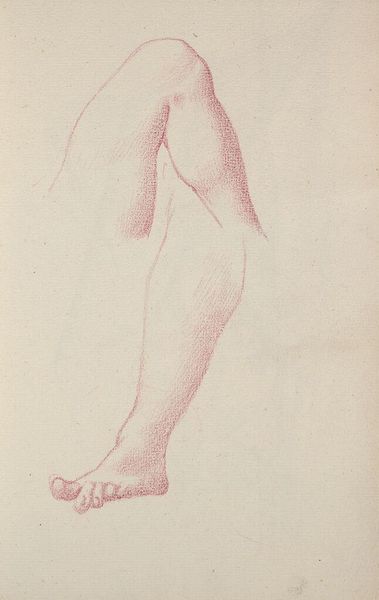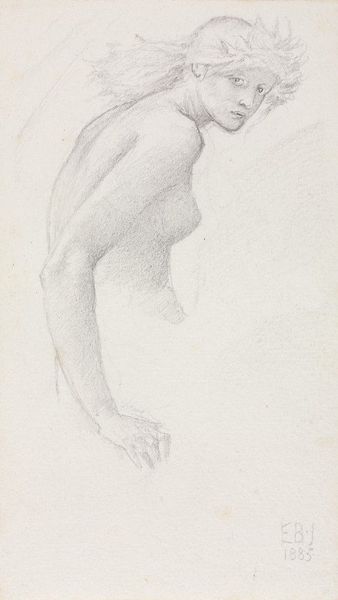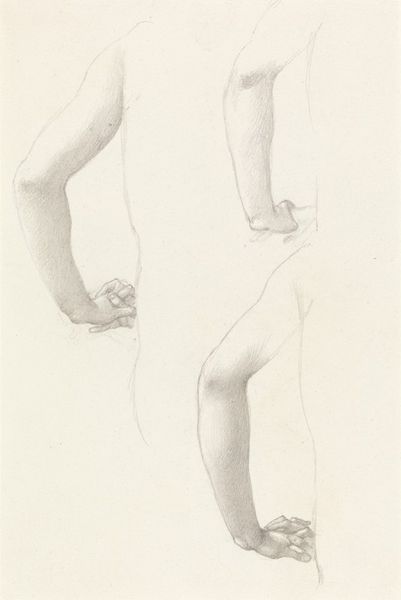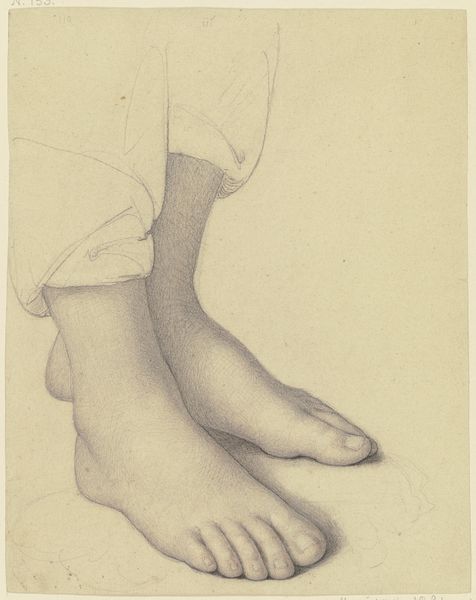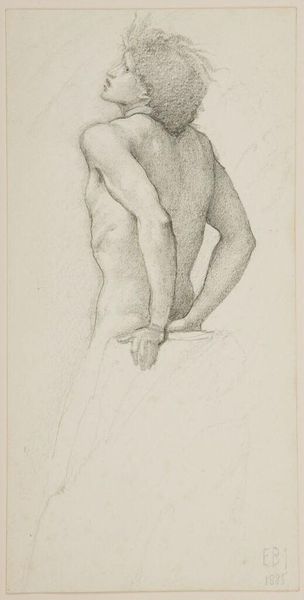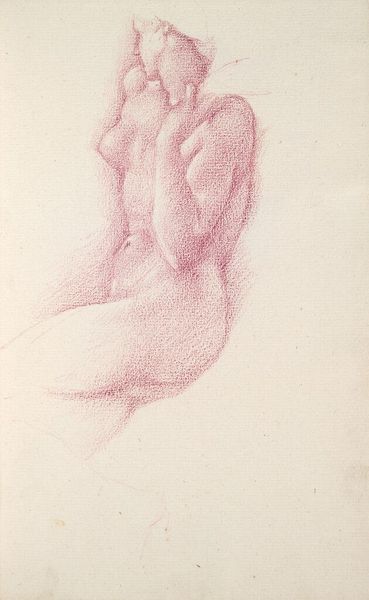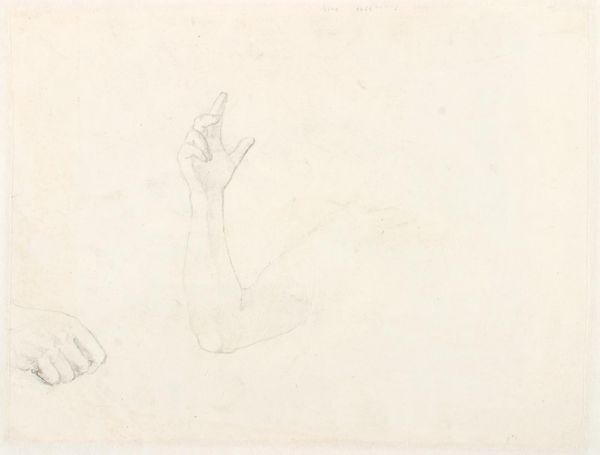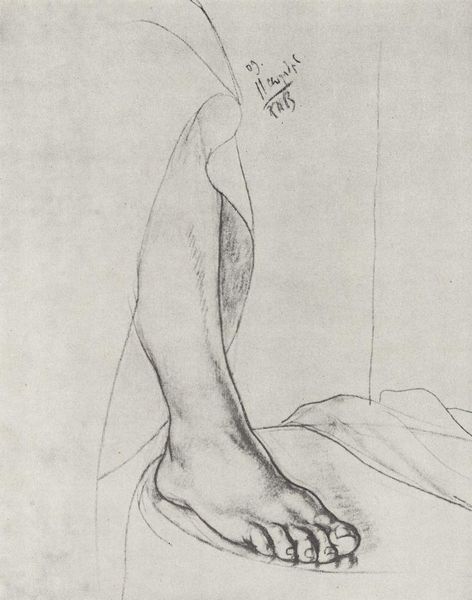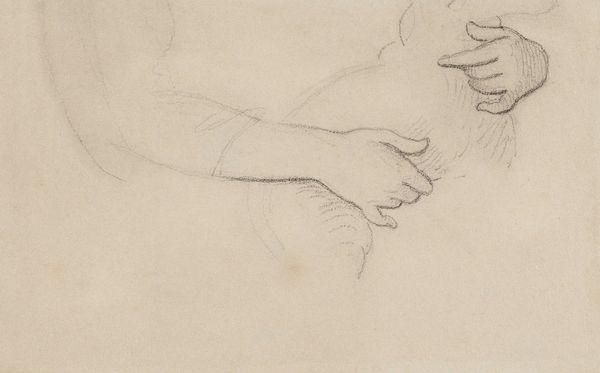
Leg of a Slave, for "The Wheel of Fortune"; verso: blank c. 1875
0:00
0:00
Dimensions: 27.2 x 18.1 cm (10 11/16 x 7 1/8 in.)
Copyright: CC0 1.0
Editor: Burne-Jones's pencil study, "Leg of a Slave," is striking. It's just a fragment, a seemingly simple study, yet the weight of the subject is palpable. What can you tell me about it? Curator: Consider the socio-economic context of its production. Burne-Jones, a key figure in the Arts and Crafts movement, was deeply concerned with labor. This study, a preparation for a larger allegorical work, can be read as a commentary on the commodification of human beings. How does the medium, a delicate pencil drawing, contrast with the brutal reality it depicts? Editor: That's a great point. The lightness of the drawing almost feels like a way of distancing from the reality of slavery. Curator: Precisely. The tension between the ethereal aesthetic and the harsh subject matter invites us to question the role of art in addressing social injustices. I think this exercise helped me to view the artwork beyond its aesthetic value.
Comments
No comments
Be the first to comment and join the conversation on the ultimate creative platform.
